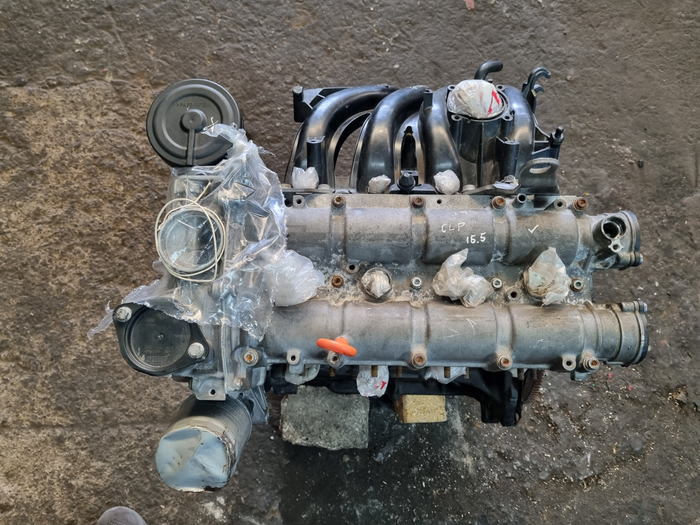Exactly How a Clp Engine Can Improve Efficiency in Different Industries
The development of CLP engines marks a considerable shift in functional efficiency throughout different markets, driven by their ability to maximize fuel usage and minimize downtime. Industries such as production and logistics stand to gain significantly from their durable layout and constant power result, which promise to enhance operations and improve performance. As organizations progressively focus on sustainability alongside effectiveness, the duty of CLP engines becomes much more vital. What remains to be seen is exactly how these innovations will shape the future landscape of commercial operations and their effect on wider financial trends (clp engine).
Overview of CLP Engines
CLP engines, or Continuous Liquid Propellant engines, stand for a substantial development in propulsion technology, especially for space applications. These engines utilize a continual feed system that permits the sustained expulsion of propellant, leading to enhanced performance and performance compared to conventional solid or hybrid propulsion systems. By keeping a continuous flow of fluid propellant, CLP engines can attain extra exact drive control, which is essential for navigating spacecraft in various mission circumstances.
The layout of CLP engines incorporates advanced materials and cutting-edge gas management systems. clp engine. This results in reduced weight and boosted integrity, important elements for long-duration space missions. The constant procedure decreases the threat of combustion instability, an usual challenge in conventional rocket engines.

Advantages in Production
The manufacturing of Continuous Liquid Propellant (CLP) engines offers several notable benefits that improve both efficiency and cost-effectiveness. Among the key benefits is the structured production procedure, which minimizes the intricacy related to typical propulsion systems. By utilizing liquid propellant, manufacturers can accomplish higher accuracy in engine performance, causing optimized energy output and lowered waste.
In addition, CLP engines promote a higher level of modularity, enabling less complicated combination right into numerous production lines. This versatility can considerably decrease preparations and boost total operational flexibility. Making use of CLP modern technology additionally often tends to reduce the requirement for extensive upkeep because of less relocating components, which translates right into lowered downtime and functional costs.

Applications in Logistics
Leveraging Continual Fluid Propellant (CLP) engines in logistics offers substantial benefits in functional effectiveness and reliability. These engines give a durable service for various transportation demands, allowing the smooth movement of products throughout substantial distances. The intrinsic design of CLP engines permits for constant power output, which translates right into smoother and much more predictable transportation schedules.
Among the crucial applications of CLP engines in logistics remains in heavy-duty freight transport, where they can drive both ground and aerial automobiles. Their capacity to keep high performance under differing load problems makes sure that shipment timelines are fulfilled, thus boosting customer fulfillment. Additionally, CLP engines can be integrated into automated logistics systems, helping with real-time visit this site right here monitoring and why not find out more enhancing route preparation.
In addition, the durability of CLP engines reduces upkeep downtime, enabling logistics companies to maximize their operational capacities. This is specifically beneficial in warehousing operations, where efficiency in taking care of and delivering items is important. As logistics continues to advance, the assimilation of CLP engines stands for a forward-thinking method that not only improves efficiency however additionally supports the market's growing needs for dependability and speed.
Effect On Energy Efficiency
Exactly How do Continuous Fluid Propellant (CLP) engines improve energy performance in transportation? CLP engines make use of a consistent circulation of fluid gas, maximizing combustion procedures and keeping a secure thrust outcome. This layout decreases power losses related to typical burning engines, where gas shipment can vary and lead to inadequacies.
The continuous procedure of CLP engines permits a much more effective thermal cycle, causing site link higher details impulse compared to conventional engines. clp engine. This converts to reduced fuel consumption for the same amount of work done, substantially reducing functional prices throughout numerous transportation markets, consisting of aeronautics and maritime markets
In addition, the capacity of CLP engines to preserve optimal efficiency under differing tons conditions decreases the requirement for regular acceleration and slowdown, better enhancing gas efficiency. Boosted energy efficiency not only adds to set you back savings however likewise brings about lower greenhouse gas exhausts, straightening with worldwide sustainability goals.
Future Trends and Innovations
Arising improvements in Continual Fluid Propellant (CLP) engine modern technology pledge to transform the landscape of transport performance and sustainability. As industries pivot towards greener choices, CLP engines stand at the center, integrating cutting-edge materials and style approaches that boost efficiency while reducing environmental effect.
One of one of the most appealing fads is the adoption of crossbreed systems that incorporate CLP engines with eco-friendly power resources. This synergy can enhance fuel usage and decrease emissions, straightening with worldwide sustainability objectives. Developments in computational liquid characteristics (CFD) are facilitating the style of more aerodynamically reliable engines, leading to decreased drag and enhanced gas performance.
Additionally, the development of smart tracking systems is set to improve operational efficiencies. These systems leverage data analytics and IoT technology to enhance engine performance in real-time, making sure that the engines run within their most reliable criteria.
As study remains to discover alternative propellant formulations-- such as biofuels and artificial gas-- the future of CLP engines looks encouraging. By utilizing these technologies, sectors can not just improve their efficiency but likewise add substantially to a cleaner, a lot more lasting future in transport.
Verdict
In verdict, CLP engines stand for a considerable innovation in performance throughout several markets. The combination of sophisticated products and less relocating parts minimizes maintenance needs, while placement with sustainability objectives settings CLP engines as a critical technology for the future.